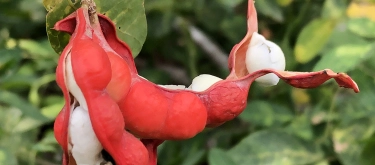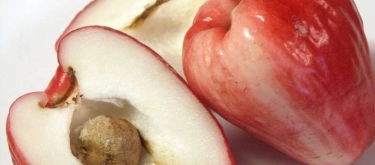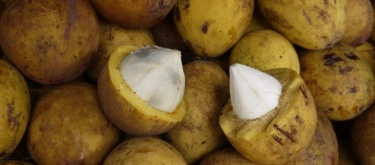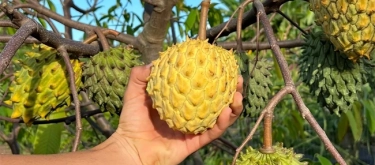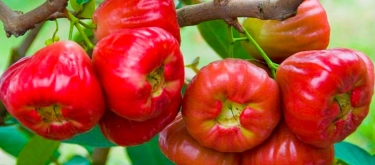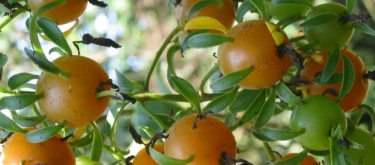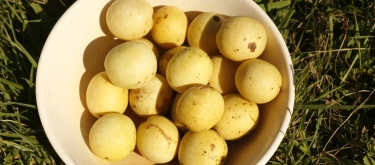Santol: Taste Profile, Aroma, Benefits and Health Risks
Santol (also known as Cotton Fruit, Sentul; Sandoricum koetjape) is a tropical fruit native to Southeast Asia, particularly popular in Thailand, Indonesia, Malaysia, and the Philippines. Santol’s appeal lies in its pleasantly sweet-and-sour taste, cottony texture, and versatility in local cuisines, both fresh and in cooked dishes. It gained popularity beyond its native region due to its unique flavor and culinary adaptability.
Santol seeds are toxic and must never be consumed, as ingestion can cause serious digestive blockages. Individuals sensitive to acidic or sour fruits should moderate intake to avoid gastrointestinal discomfort. Safe for pregnant women in moderation.
What does Santol taste like?
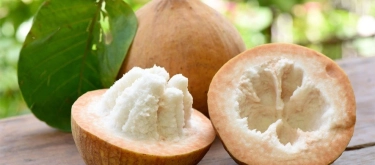
Taste
Santol has a complex yet harmonious taste, balancing sweet and sour characteristics distinctly. The outer pulp presents a mildly acidic and tart profile with clear citrus-like undertones, whereas the inner pulp surrounding the seeds is noticeably sweeter, featuring mild fruity sweetness reminiscent of peach and apple, nuanced by subtle floral notes.
Aroma
Its aroma is gentle, fresh, and slightly floral, with light citrus nuances accompanied by hints of apple blossom and subtle tropical undertones.
Texture
The outer edible layer is crisp, firm, and juicy, similar to a firm apple. In contrast, the inner pulp has a soft, fibrous, and fluffy cotton-like texture surrounding slippery, inedible seeds, creating an intriguing contrast in mouthfeel.
Appearance
Santol fruits are typically spherical, measuring 5–8 cm in diameter. Their leathery skin ranges from pale yellow to golden brown when ripe, encasing creamy-white, segmented pulp clustered around distinct, large seeds.
In-depth Flavor Analysis:
Santol’s nuanced flavor is rooted in its complex chemical composition of sugars, organic acids, tannins, and aromatic volatile compounds. The sweetness primarily originates from fructose and glucose, balanced by significant amounts of organic acids, mainly citric and malic acids, providing the fruit's characteristic tangy notes.
-
Acidic Profile: Citric acid contributes prominently to the refreshing, citrus-like acidity, delivering tartness and vibrancy to the outer pulp. Malic acid supports this with milder acidity, enhancing fruity depth reminiscent of green apples.
-
Sweetness Profile: The fruit's sweet layer around seeds contains higher concentrations of sugars, predominantly fructose, offering subtle peach-like sweetness without overpowering the acidic balance.
-
Aromatic Compounds: Santol’s aroma and flavor intricacy are influenced by volatile compounds, including limonene, α-pinene, and ethyl butanoate, which impart citrusy, pine-like freshness, and fruity-floral undertones. Low concentrations of linalool add soft floral characteristics, enhancing the fruit’s appealing aroma.
-
Tannins and Astringency: Tannins, present predominantly in less ripe fruits, introduce mild astringency. This bitterness significantly diminishes upon full ripening, converting into gentle complexity rather than harshness.
Environmental factors, especially soil composition, rainfall, and harvest timing, substantially impact these flavor constituents, causing variations in acidity and sweetness across regions and seasons.
Varieties and Culinary Applications:
Santol mainly has two popular varieties:
- Yellow Santol: Sweeter, thinner skin, predominantly consumed fresh.
- Red Santol: More acidic, thicker-skinned, favored in cooked culinary applications.
Common culinary uses include:
- Fresh Consumption: Often enjoyed raw with salt, sugar, or spicy condiments.
- Salads: A common ingredient in spicy, tangy Southeast Asian salads.
- Cooked Dishes: Frequently used in sour soups (such as Filipino "Sinigang na Santol"), curries, and stews, providing a fruity sourness similar to tamarind.
- Preserves: Widely pickled or prepared into jams and chutneys.
Selection and Storage:
Choose santol fruits with evenly colored, golden or yellow-brown skin that yields slightly to pressure without feeling overly soft. Avoid damaged or severely blemished fruits. Santol keeps well at room temperature for up to 3 days, or refrigerated for up to one week. Always remove and discard seeds carefully when consuming or preparing dishes.
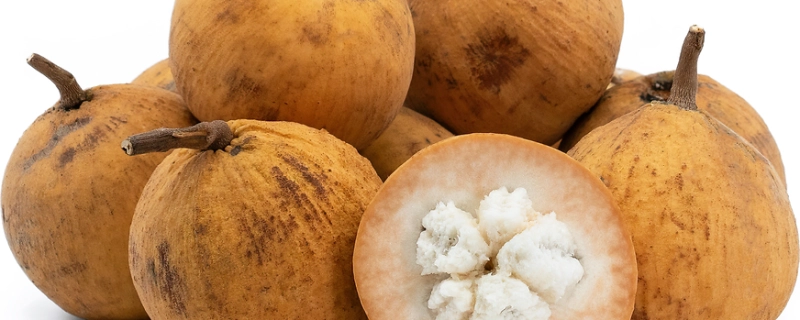
Nutritional Insights:
Santol is rich in dietary fiber, vitamin C, B vitamins, calcium, phosphorus, and antioxidants. Regular consumption can effectively alleviate digestive issues such as constipation due to its fiber content. The vitamin C in santol strengthens immunity and reduces susceptibility to infections, while its calcium and phosphorus content support bone density and dental health, particularly beneficial for those at risk of osteoporosis or mineral deficiencies.
Expert Insights & Culinary Tips:
- Flavor Enhancement: Santol perfectly balances spicy dishes, seafood preparations, and salads, particularly in Southeast Asian cuisines. Chefs recommend combining santol with bold flavors like chili peppers, garlic, shrimp paste, coconut milk, and tamarind for an ideal sweet-sour harmony.
- Seed Safety: Always remove and discard santol seeds, as they are toxic and pose significant health risks.
- Preparation Recommendations: Peel the tough outer skin and utilize the crisp outer pulp for salads, while the sweeter inner pulp is excellent for desserts or preserves.
Interesting and Curious Facts:
- In Thailand and the Philippines, santol trees symbolize hospitality and abundance, often planted for shade near homes.
- Santol bark and leaves were traditionally used in Southeast Asian herbal medicine to treat skin inflammation and mild digestive disturbances.
- The nickname "Cotton Fruit" is derived directly from its fluffy, cottony pulp texture.
Harm and Dietary Considerations:
The primary danger associated with santol is ingestion of its seeds, which can cause serious digestive blockages or complications. Excessive fruit intake can lead to digestive irritation in sensitive individuals. Pregnant women and young children should consume santol moderately.
Religious Dietary Considerations:
Santol is universally permissible across religious dietary practices, including Halal, Kosher, Hindu vegetarianism, and Buddhist traditions. It holds cultural significance in Southeast Asian communities, especially during festive occasions, though it does not have specific religious uses or restrictions.
Final Thoughts & Sensory Journey:
Santol provides an exciting sensory exploration, offering contrasting textures and flavors in every bite. Its juicy crispness, balanced sweetness, and refreshing acidity make it a versatile and appealing tropical fruit, inviting both culinary creativity and nutritional appreciation.
Resources:
- "Edible Medicinal and Non-Medicinal Plants" by T.K. Lim (Springer, 2012)
- "Fruits of Warm Climates" by Julia F. Morton (Echo Point Books, 1987)
- "Underutilized Tropical Fruits of Asia" edited by G.K. Jayaprakasha and Bhimanagouda S. Patil (CRC Press, 2019)
